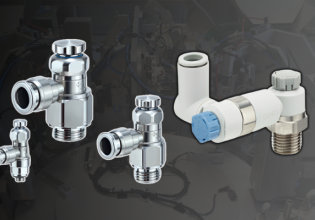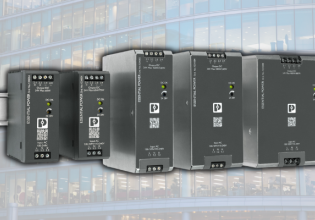Investigation Into Popular WMS Software
This article describes the features and advantages of several of the more popular warehouse management systems (WMS) on the market.
Check out the previous articles in the warehouse management system (WMS) series:
There are many warehouse management system solutions available today. While similar in scope and core functions, each one of them offers unique features that give them a competitive advantage over the others. The next sections review some of the most widely used commercially available WMS solutions in the world. Also, the last section of this article provides a brief overview of some WMS systems that are particularly oriented towards highly-automated facilities.
Blue Yonder Warehouse Management
The Blue Yonder WMS was formerly known as JDA Warehouse Management, a name that is still used sometimes. It covers all of the expected functions of a WMS and it is known for being flexible to changes and unexpected events. Blue Yonder comes with a wide variety of libraries that can be installed and managed by the customers. This also makes the application more scalable since users can expand it if needed. The application is known to be very responsive because it is not prone to experience slowness even if large amounts of data are being handled.
In addition to the previous features, Blue Yonder WMS offers yard management capabilities, overseeing the movement of materials inside trucks in the yard of the production facility. This is a significant advantage because other solutions either don’t offer this or require the integration of a separate YMS application (yard management system).
On the downside, some users have complained about the lack of training options, leaving them to self-teach the platform.

Figure 1. Screen capture of a report created in the Blue Yonder WMS GUI. Image used courtesy of Blue Yonder
Manhattan WMS
The Manhattan WMS, from the company Manhattan Associates, is another advanced application that is a major player in the market. Like Blue Yonder, it also covers all of the core functions of a modern WMS. It is also characterized by a high level of integration with automated material handling equipment and state-of-the-art machine learning and artificial intelligence technologies. Unlike many other commercial WMS available, the Manhattan WMS offers an embedded warehouse execution system module that allows integration with automation, voice recognition, mobile devices, and other robotic components.
Flexibility is another key feature of the Manhattan WMS. For instance, it allows multi-carrier deliveries to optimize the supply chain, which is an essential feature in distribution centers. It also provides advanced support for cross-docking, the ability to transfer materials from one mode of transport to another, skipping the warehousing steps. Cross-docking is a vital feature of a just-in-time operation.
The Manhattan WMS is on the higher end of the cost spectrum, but the ROI can be substantial when a business can justify and absorb the initial investment. As with any business decision, software costs must be weighed against payback timelines.

Figure 2. A dashboard from Manhattan Warehouse Management. Image used courtesy of Manhattan Associates
Oracle Netsuite WMS
The Netsuite WMS platform comes in two versions, the WMS Lite, and the WMS Advanced. WMS Lite is geared towards small and simple warehouse operations, while WMS Advanced is better suited for large systems. Besides the standard WMS functions, the Netsuite WMS places special importance on mobile inventory management via its partnership with the RF-SMART platform. It is a cloud-based that improves traceability of barcodes in the cloud, eliminating much paperwork in the process.

Figure 3. A dashboard in the Oracle Netsuite WMS. Image used courtesy of Warehouse Automation
Fishbowl Warehouse
Fishbowl Warehouse is part of a manufacturing and warehouse management platform consisting of multiple applications, including Fishbowl Manufacturing and Boxstorm. This platform is geared towards small businesses. Its graphical user interface is user-friendly and costs wise it is more affordable. Fishbowl offers the option to integrate with QuickBooks, the well-known accounting software package. It is cloud-based and can be configured to work on mobile devices.

Figure 4. A dashboard from Fishbowl Warehouse. Image used courtesy of Fishbowl
Others
There are many more WMS systems: 3PL Warehouse Manager, SAP eWMS, Microsoft Dynamics 365, TECSYS Warehouse Management, Increff ASURE, DELMIAWorks, to name just a few. Among them, SAP eWMS is another application worth mentioning due to being part of the larger SAP ecosystem. The eWMS can do virtually what any other WMS does, with the advantage of easy integration in systems that already use SAP as their ERP.

Figure 5. SynQ from Swisslog integrates easily with their ASRS for real-time 3D visualization. Image used courtesy of Swisslog
In addition to all these standalone WMS products mentioned in this article, there are also a large number of logistics automation vendors that offer their own custom WMS solutions. These applications are normally born from the perspective of the control and automation or the Warehouse Control System side of the spectrum. While perhaps not the most advanced when it comes to graphics and external functionalities, they do offer the best option for the customer that already has the same vendor’s automated equipment installed. Some of the most popular WMS systems in this category are SynQ from Swisslog, E’WMS from Dematic, Systore from System Logistics, and SMILE80 from Elettric80.
Summary
Choosing a WMS is a similar experience as any other enterprise software package. Competitors can each promote strengths for particular industries and operations, but the ultimate responsibility of the selection comes down to the company. Research the options, realistically evaluate the ROI of each option, and design KPIs that can assess the results and lead to your success in the following months and years.






